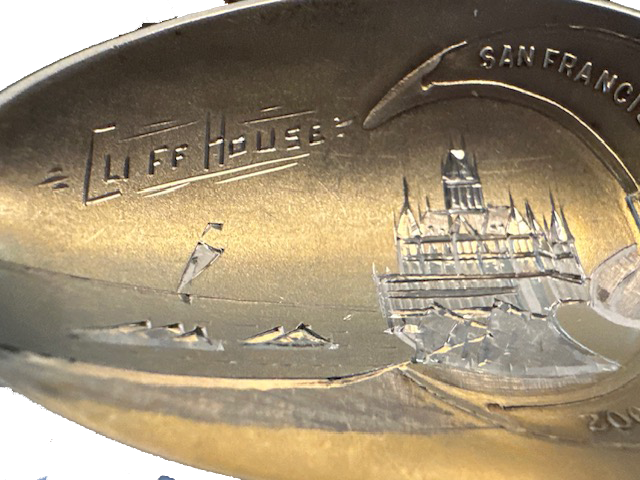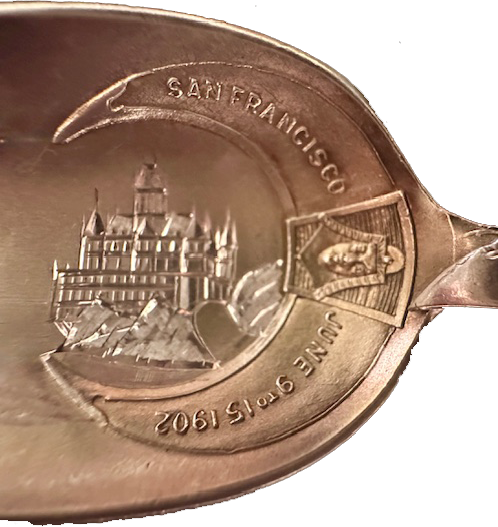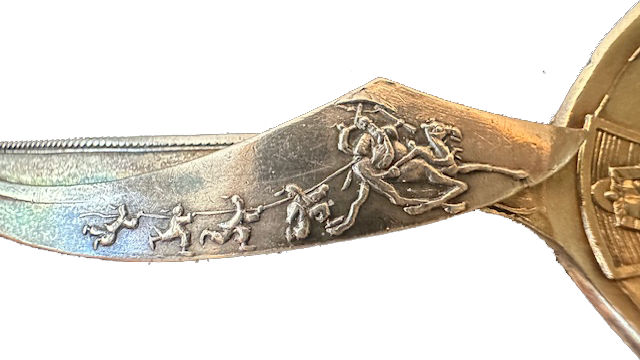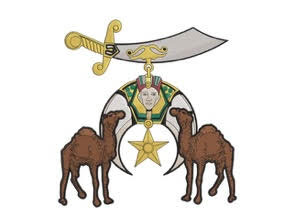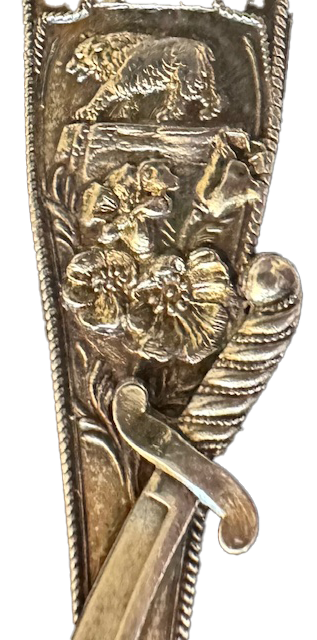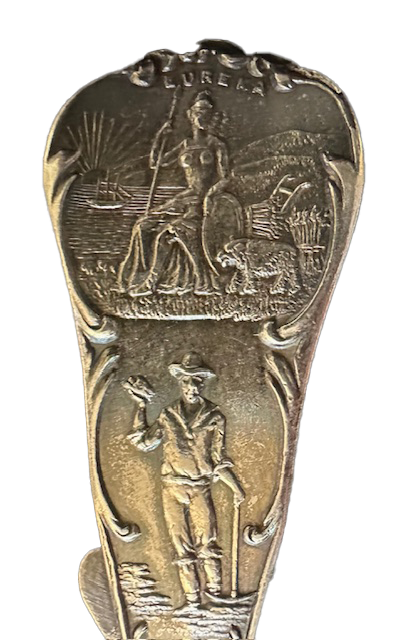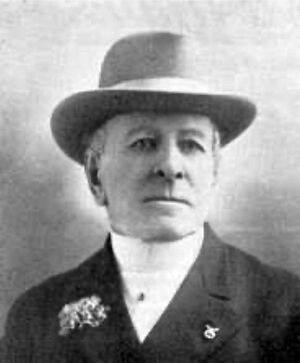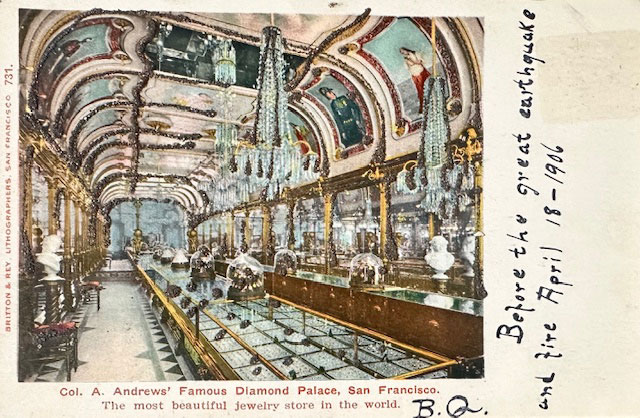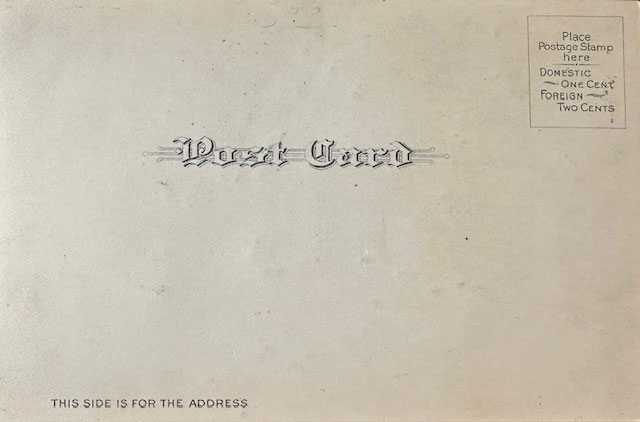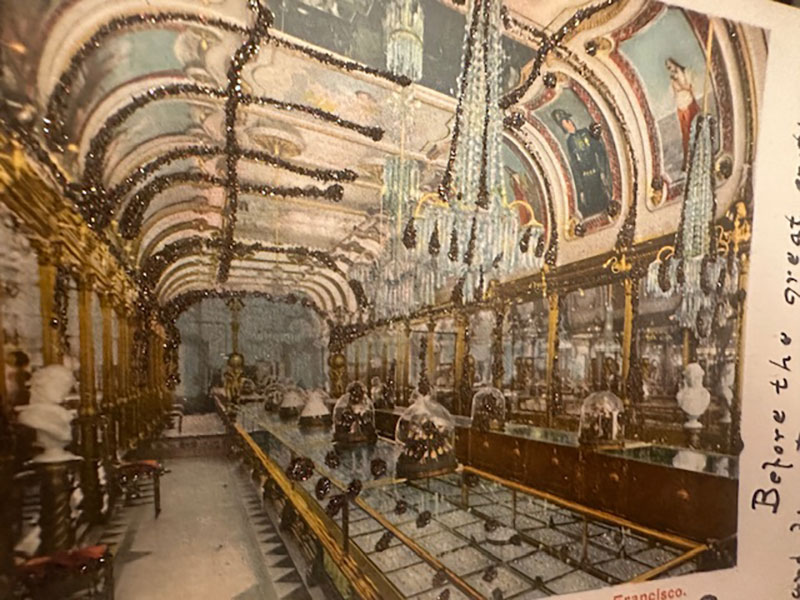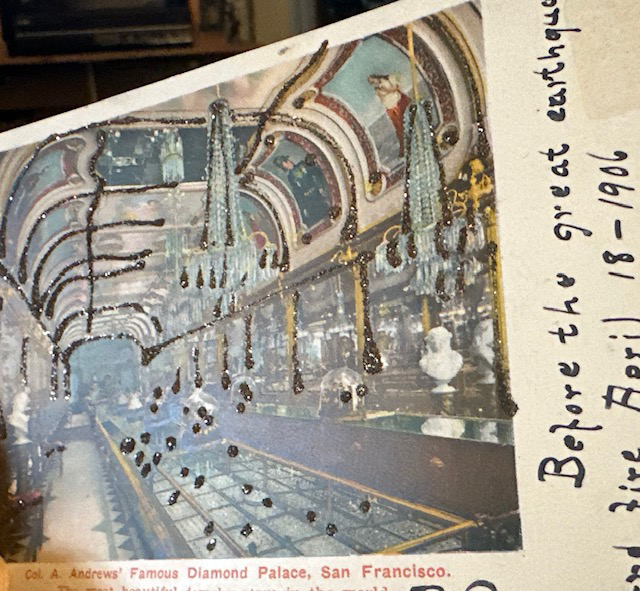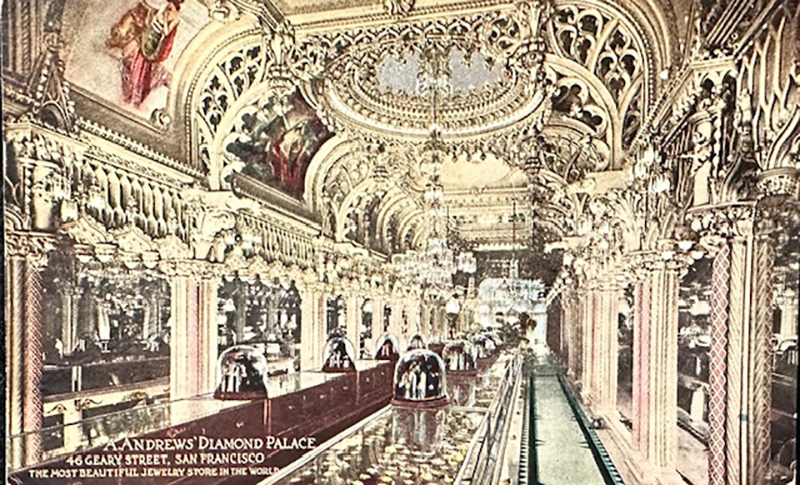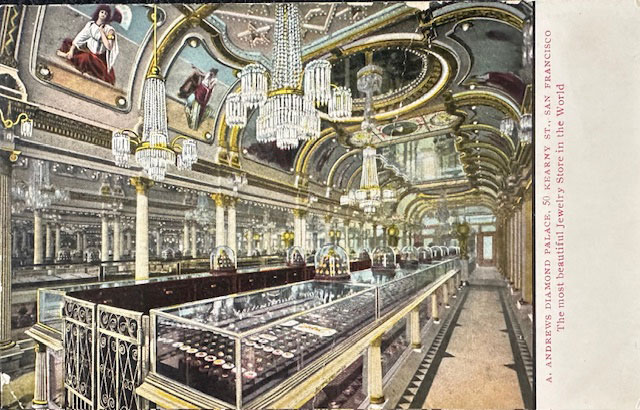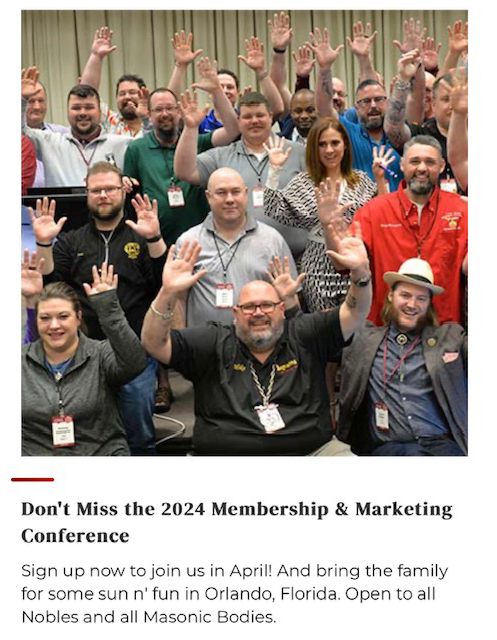Spiffy San Francisco Spoon
Historical Essay
by Ken Stein
A Sterling Example Of A Spiffy San Francisco Spoon With A Whole Lotta History Goin’ On
The front …
The front, vertical …
The back …
And back to the front …
In the goldwashed bowl is a bright and sparkling lovely acid-etched image of the grand Second Cliff House (1896-1907) accompanied by images of Seal Rocks and a sailboat.
And there are on the right side of the bowl “San Francisco – June 9 to 15, 1902”. That was of course about four years before the earthquake and Great Fire which that Cliff House survived, only to fall to a great fire of its own the following year.
Noting here also the Crescent and image of the Sphinx. As you may have already gathered, this was a Shriner’s Souvenir Spoon. It was designed as a memento of the ‘28th Annual Session of Ancient Arabic Order of the Nobles of the Mystic Shrine for North America San Francisco,’ aka the 28th Annual Imperial Session of Shriners International, which was held in ‘Golden Gate Hall’ from June 9 to June 15.
Golden Gate Hall was a large brick building with a capacity of over 800 that stood at at 625 Sutter St. on the south side of the street between Mason and Taylor. It did not survive the earthquake.
The spoon was most likely sold to the participants at the event.
At the bottom of the stem is a attached-on scimitar …
On the scimitar are some small men (and judging from their queue’s flying in the wind, Chinese men) holding on to a rope and chasing along after someone holding an umbrella riding a camel.
The scimitar, the crescent, the Sphinx and camels, are all symbols on the Shriners emblem:
Above the scimitar is the California grizzly bear and some California poppies. The California poppy (‘Eschscholzia Californica’) was designated the state flower of California in 1903, and has appeared frequently on California souvenir spoons before and after.
And above those in the finial, wearing his Shriner’s fez, is an image perhaps of the Shriner’s 1902 Imperial Potentate.
A look at the back of the spoon …
At the top we have apropos of the Great Seal of California, the State Motto “Eureka” (“I Found It!), the Greek goddess Athena, a California grizzly bear, and the sun sitting in the west. Under which is a gold miner.
On the stem, on either side of the copyright notice, it says Sterling [ ‘S’ inside a circle, which is the silver hallmark of the Shepard Manufacturing Company] and ‘849’. The number 849 is a Shepard company catalog or item reference number.
Sterling Silver is the standard of quality for articles containing 92.5% silver and 7.5% copper (and/or other alloys). Because 100% silver is so soft, silver is often blended with other metals for increased strength, resulting in lower percentages of silver, such as 900 or 800. Still lovely to look at, though not exactly “Sterling”.
And then (to me the most interesting thing of all): “DESIGNED & COPYRIGHTED BY A ANDREWS DIAMOND PALACE S.F. CAL”
As reported by The Wasp February 15, 1908:
“Colonel A. Andrews — Among the portraits of prominent people in The Wasp this week is that of Colonel A. Andrews, the gallant old pioneer, who remembers San Francisco when it was a little village clustered around Telegraph Hill. To few people is it given to enjoy such a long and useful life as Colonel Andrews has lived, for he has been some sixty years identified with the progress of San Francisco as one of its leading merchants, and in that time, has seen our city pass through many strange vicissitudes.
“A volume containing the reminiscences of this pioneer would make very interesting reading, for he has known, intimately, most of the noted men who have shaped the history of the Pacific Coast since the days when, as a captain in the United States Army, he fought under the Stars and Stripes in the war with Mexico. Few of his old comrades of that stirring period are still alive, but the Colonel has not apparently changed in the least for the last thirty years. Time seems to pass him by untouched.
Colonel A. Andrews.
Photo: courtesy Museum of the City of San Francisco
“The great fire of 1906 is not the first calamity from which Colonel Andrews had seen San Francisco arise greater than ever.
“Before the last great conflagration Colonel Andrews’ Diamond Palace on Montgomery Street, was one of the sights of San Francisco. Scarcely had the smoke subsided on the blackened ruins of San Francisco, before the Colonel with the spirit of a true pioneer began to reconstruct his Diamond Palace on the same plan of gorgeousness, on Van Ness near Ellis Street, and there his host of friends hope to see him presiding for many years to come. In his younger days, the Colonel took a lively interest in sporting events of various kinds, and has attended some of the most notable ever held. Even now he is not averse to recounting his experiences in that line. Although never a candidate for office he has also taken an active interest in public affairs and has sat as a delegate in some famous conventions in California.
“He is a genuine type of the famous old pioneers who laid the foundation of San Francisco so broad and strong that nothing can destroy them.
For a more modern account of Colonel Andrews, see “The Most Beautiful Jewelry Store in the World”.
Some Diamond Palace Postcards:
1.
“Col. A. Andrews' Famous Diamond Palace, San Francisco. The most beautiful jewelry store in the world.” As someone aptly noted back then, “Before the great earthquake and fire April 18, 1906.” As indeed it was. Note the undivided back postcard. Prior to 1907, the backs of postcards was for the address only and it was illegal to write a message there.
This one particular post card is unique because it was manufactured with lines and drops of very tiny (still quite glittery) sparkling glitter, to emphasize the diamonds and jewelry, and the sparkling chandeliers. Is a little hard to see in the photo, but is on the lines on the ceiling and dots of on the display cases:
Holding the card in angle, easier to see where …
2.
“A. ANDREWS' DIAMOND PALACE, 46 GEARY STREET, SAN FRANCISCO. THE MOST BEAUTIFUL JEWELRY STORE IN THE WORLD”
This is one of the stores that he opened after the earthquake and fire.
After 1907, divided backs became the norm.
3.
“A. ANDREWS DIAMOND PALACE, 50 KEARNY ST., SAN FRANCISCO, The most beautiful Jewelry Store in the World”
This one dates from 1915. We know this because on the back there is an advertisement for the 1915 Panama Pacific Exposition, where he undoubtedly had a booth.
Meanwhile, back to today:
The 2024 Shriners




